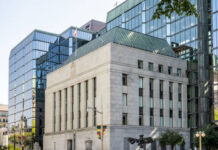The Fed finally will reduce bonds, the pound to stall, China might deleverage
The big news event on 20 September will be the report of the US Federal Reserve’s Open Market Committee – we believe the central bank will finally announce plans to start selling its massive holding of bonds. This is likely to begin in October. Meanwhile, the Fed is unlikely to move interest rates.
What does this mean for the US dollar? Possibly a shock. Markets are calm – too calm, really, like those western films where the sheriff rides into an empty town. Despite the tensions in North Korea and the Middle East, despite a see-sawing US president, despite implied volatility, willingness to take risks is historically unprecedented, which we know could end in tears. Markets continue to rationalize this, by seeing low inflation, solid growth and gradual central bank normalization. We’re not so sure. A balance-sheet unloading could end the ‘feel good’ environment, sending both bond and stock markets southward.
Markets base scenario is that markets will fade the Fed announcement, instead pricing in gradual tightening and shallow interest rate cycle. This will keep the USD on weak footing. And it will keep rolling the current uptrend of high-beta currencies. However, we suspect markets are underpricing fed risk given the strong labor markets and desire for the fed to reach normal conditions. We have penciled in a near term USD strength. The real x-factor will be the extent of the rally.
As for the pound sterling, we believe it will tread water for a while. Markets are cross-eyed between the Bank of England’s hawkish words and the tumult of Brexit. Prime Minister Theresa May might clarify matters a bit with a speech on Friday (expected £20bn to the EU). Yet Foreign Minister Boris Johnson has signaled that her vision of Brexit will not go unchallenged. So far, the pound’s post-Brexit-election plunge has supported the UK economy, yet headwinds are increasing. A rate hike might be needed, but it is unlikely as domestic outlook is softening and real wages are falling.
And what about China? Growth is back, along with capital inflows and rising forex reserves. So, the People’s Bank of China is likely to let interest drift higher. This would also help contain China’s credit boom, or should we say bubble. Medium term, China’s central bank aims to deleverage. Rumours continue that China will liberalise capital flows – we are not yet convinced this is coming soon.
Wild cards? Catalonia’s independence referendum, China’s 19th national congress and the probability of snap elections in japan. The trigger will be today’s Fed announcement. If the markets shrug it off, they just might keep the good times rolling.












